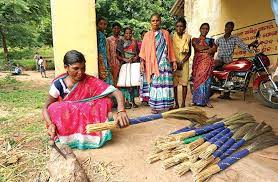Status Of Adivasi Livelihoods (SAL) Report, 2022:

A report Status of Adivasi Livelihoods (SAL) Report, 2022, released by the non-profit organization PRADAN highlights that Food subsidy through Public Distribution System (PDS) has reduced the stress that Adivasi households would have faced due to lower income.
- The aim of this report is to understand the status of livelihoods of Scheduled Tribes from India’s central belt.
Key Highlights of the Report:
- The SAL Report, 2022 is based on a household survey covering a sample of 6,019 households.
- The report revealed that the average annual income for Adivasi households in Madhya Pradesh and in Chhattisgarh is much less than the national average annual income per agricultural household during the agricultural year 2018-19.
- In Chhattisgarh, the food and other items consumed by an Adivasi household in a year have a market price of almost Rs 18,000.
- Only around 13% of this amount is spent by households to procure those goods.
- The remaining 87% of the amount, is the subsidy given by the government.
- An Adivasi household in Madhya Pradesh procures goods from PDS worth Rs 10,000 market price annually, spending only 22% of the amount to procure them.
- In Madhya Pradesh, 32% of Adivasi households, 27 % of non-Adivasi households, and 61% of Particularly Vulnerable Tribal Groups (PVTGs) households reported being severely food insecure.
- In Chhattisgarh, 27% of Adivasi households, 42% of non-Adivasi households, and 29% of PVTG households reported being severely food insecure.
- The areas of Madhya Pradesh’s west, dominated by the Bhil community (which overlaps into neighboring Rajasthan, Gujarat and Maharashtra), had the highest average household income among both Adivasi and non-Adivasi households.
- It was 1.5 times higher than other regions of the state.
- Adivasi women enjoy more autonomy than their non-Adivasi counterparts.
- But the workload of doing household chores and livelihood activities is mostly borne by Adivasi women.
- Gender discrimination remains alive in decision-making practices and also customary practices.




